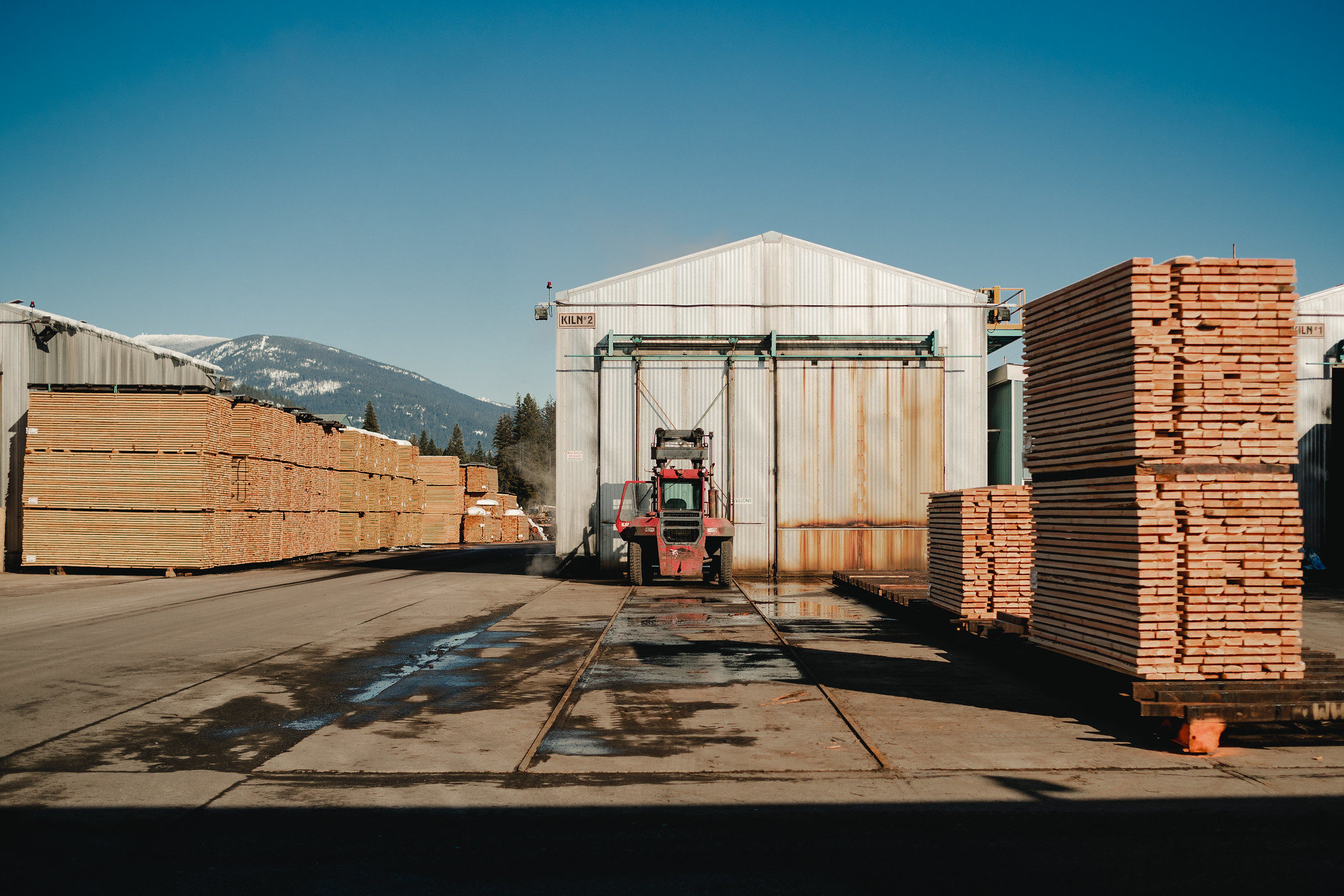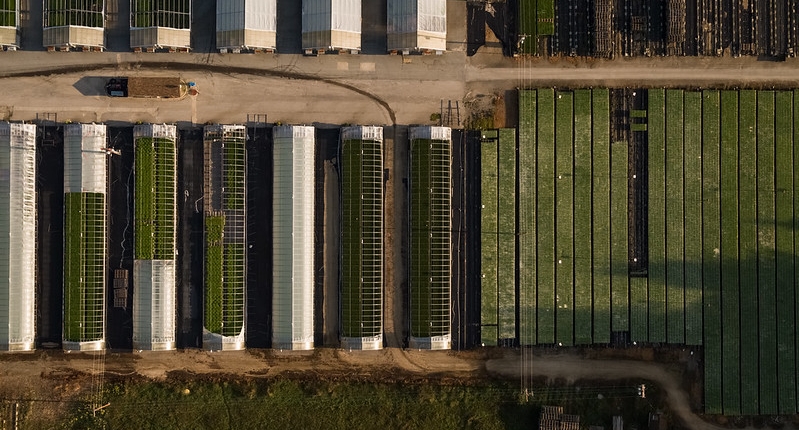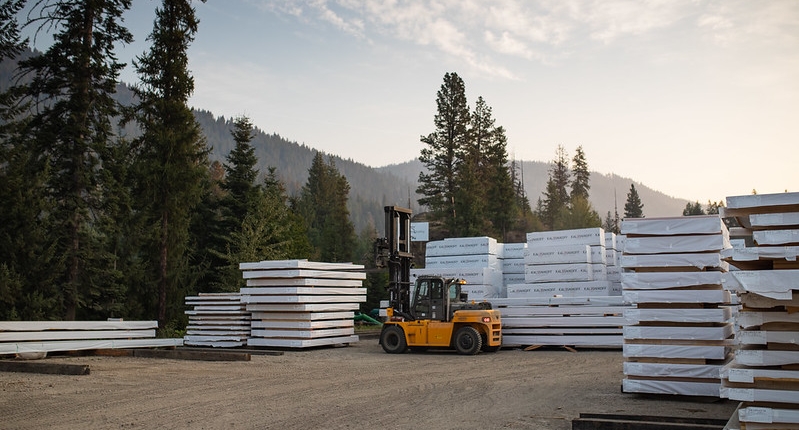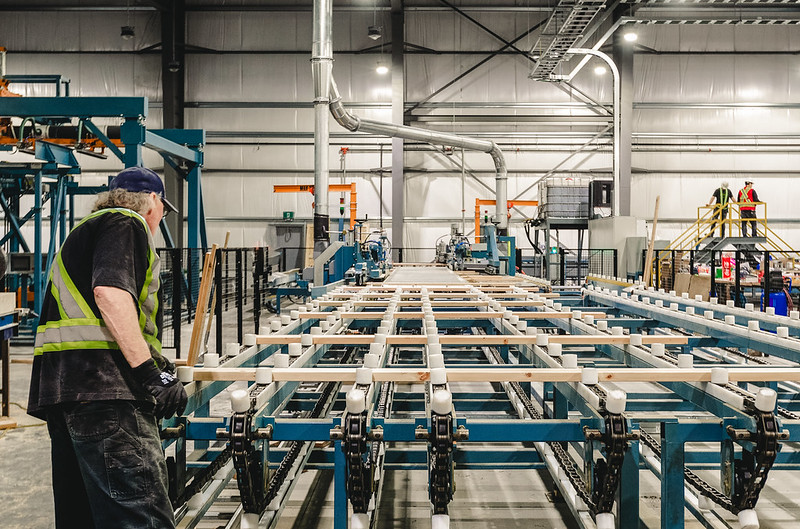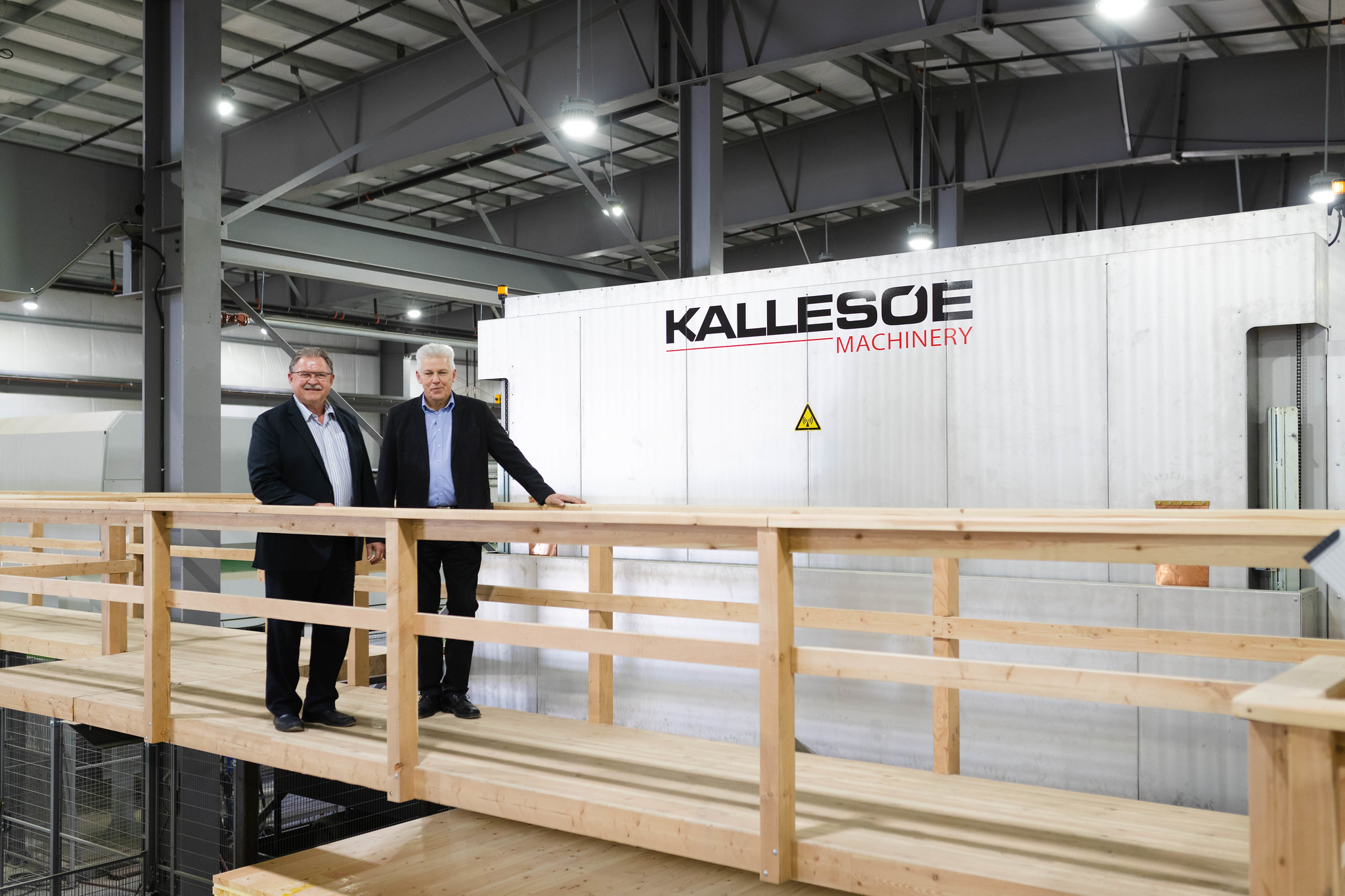Sustainability Spotlight: Kalesnikoff & Mass Timber
Kalesnikoff is a family-owned and operated forestry company just outside Nelson with one of the most advanced vertically integrated mass timber sites in North America.
Vertical integration is a strategy that allows a company to streamline its operations by taking direct ownership of various stages of its production process rather than relying on external contractors or suppliers.
Mass Timber
Mass timber uses state-of-the-art technology to glue, nail, or dowel wood products together in layers. This process produces exceptionally strong, versatile, and large structural panels, posts, and beams.
The recently constructed Mass Timber Facility at Kalesnikoff is capable of producing cross-laminated timber structures (CLT), Glulam beams and columns, and glue-laminated timber (GLT) panels used for roof and floor assemblies.
The Benefit of Mass Timber – Climate Context
Increasingly, architects, developers, and engineers are looking towards mass timber as a more sustainable and energy-efficient building material when compared to materials high in embodied carbon, like concrete and steel.
If you look 30 years down the road to 2050, the world is projected to have 2.3 billion new urban dwellers, and a significant amount of new construction will be needed to house all those people.
When you take into consideration that concrete production alone accounts for 5 to 6 percent of global greenhouse gas emissions annually, and the steel industry accounts for an additional 7 to 9 percent, the need to convert from mineral-based extractive construction techniques to carbon sequestering building systems is evident if we’re to rein in emissions and tackle climate change.
Mass timber provides an attractive alternative that not only displaces more carbon-intensive materials but sequesters carbon for the lifetime of the building and reduces construction waste.
To learn more about Mass Timber, click here.
Ensuring Sustainable Outcomes
The use of mass timber in itself does not always lead to more sustainable outcomes. One of the most commonly voiced concerns about mass timber is that it has the potential to further contribute to deforestation.
Although a legitimate concern, when compared to other materials currently being used to build at scale, timber is the only one that can claim to be both regenerative and capable of sequestering carbon.
Mass timber provides a real opportunity to reduce global greenhouse gas emissions if there is a genuine focus on good governance and adopting sustainable growing and harvesting practices to minimize ecological impacts.
Through implementing several interesting initiatives that drive sustainable forestry management, waste reduction, and energy efficiency at different stages in their operations, Kalesnikoff has demonstrated a genuine commitment to ensuring more sustainable outcomes in the production and use of their mass timber products.
Sustainability at Kalesnikoff
A family-owned and operated business with deep roots in the Kootenays, Kalesnikoff still operates with the founder’s guiding principle “Take care of the Land and the Land will take care of you.”
Climate-Based Seed Transfer
Kalesnikoff was an early adopter of Climate Based Seed Transfer (CBST), an important climate change adaptation strategy to promote healthy, resilient, and productive forests and ecosystems.
CBST is the process of sourcing seeds from ecotypes that have been determined to most closely represent the expected future climate of the location in which they will be planted and helps to ensure trees planted today can survive and thrive decades from now when future climate impacts are expected to be felt more acutely.
To learn more about Climate Based Seed Transfer, click here.
Agroforestry
The Kootenay-based forestry company is also pioneering a renewed investigation into agroforestry practices that have the potential to reduce wildfire risk, enhance local food security, and integrate traditional ecological knowledge into the way we think about forest management.
Agroforestry is the practice of growing trees in conjunction with food crops.
Kalesnikoff had originally proposed an agroforestry project named Selous in Bloom on their tenure in the Selous Creek drainage just outside of Nelson. However, the project has since been moved into the Slocan valley due to concerns that it could attract bears to Nelson.
To learn more about the proposed Selous in Bloom project, click here.
Sustainable Harvesting Practices
Wildfire Risk Reduction
In collaboration with the Regional District of Central Kootenay and with funding support from the Forest Enhancement Society of BC, Kalesnikoff is currently working on the Selous Creek Fuel Mitigation Project with the aim of reducing forest fire risk adjacent to the City of Nelson.
Kalesnikoff has recently completed similar projects in West Arm Provincial Park and Harrop Procter Community Forest, where the main objectives are to reduce wildfire risk by retaining large, healthy fire-resistant trees while removing dense understory trees and surface fuels, as well as enhancing infrastructure for potential future suppression efforts.
To learn more about the Selous Creek Fuel Management Project, click here.
Hydrological Recovery Project – Selkirk College
The Hydrological Recovery Project is a collaboration between Selkirk College, Kalesnikoff, other forest licensees, BC Timber Sales, and the Ministry of Forests.
The project aims to reduce uncertainty regarding sustainable rates of cut and the potential for harvesting-related impacts on the volume and timing of runoff in forested mountain watersheds through the use of airborne LiDar surveys.
To date, there have been few published studies in the Kootenay-Boundary region geared at quantifying incremental changes in snow accumulation and melt in forest openings and regenerating stands which is why this project is important in developing more localized sustainable harvesting practices.
To learn more about the Hydrological Recovery Project, click here.
Mother Tree Project – Suzanne Simard
Kalesnikoff is a collaborator on the Mother Tree Project, which investigates forest renewal practices that will protect biodiversity, carbon storage, and forest regeneration as the climate changes.
They were responsible for research site selection, treatment prescription development, layout, and harvesting operations at a location near Redfish Creek.
This field-based research compares various retention levels of Mother Trees (large, old trees) and their neighbours, as well as regenerating seedling mixtures, in Douglas-fir forests located across nine climatic regions in British Columbia.
To learn more about the Mother Tree Project, click here.
Partial Cut Harvest Systems
Ken Kalesnikoff, CEO & President of Kalesnikoff, has directed the company to continue to increase the amount of harvest that comes from partial cut harvest systems.
Partial cutting refers to harvesting select trees and leaving desirable trees for various stand objectives.
To learn more about Partial Cut Harvest Systems, click here.
Sustainability at the Mass Timber Site
Vertical Integration
Vertical Integration plays an important role in Kalesnikoff’s ability to integrate sustainability into its operations.
At this point, the company has management control of its processes from the pre-harvest planning stage right through to the delivery of the final ready-to-install product.
The ability to exert this much control over the production process and its inputs pay off on a number of fronts, including but not limited to: greater energy efficiency, reduced greenhouse gas emissions, and waste reduction.
Reduced Transportation-Related Emissions
The plant has a reliable source of high-quality, custom-dried inbound lumber, from their own sawmill about 5 minutes down the road, and the timber itself is sourced from within a small radius of the sawmill, which cuts down on transportation-related emissions when compared to their competitors.
Custom Inbound Fibre
To date, Kalesnikoff has primarily focused on optimizing the lumber they send out from the sawmill to the mass timber facility so that they ensure that the inbound product matches a “ready to glue” profile.
By sorting through candidate lumber at the sawmill prior to transporting it to the mass timber facility, they are reducing both wasted energy that would’ve been spent re-drying lumber, and the greenhouse gasses that would have been spent transporting that lumber back to the sawmill should it not match the right profile.
Their competitors that, on the other hand, rely on an outside lumber supply, tend to have a higher proportion of rejected pieces that need to be trimmed or re-packaged for sale as regular dimension lumber.
Smaller Timber Profiles
When creating engineered beams and panels at their Mass Timber site, Kalesnikoff is able to utilize a smaller timber profile than would traditionally be required and allows them to occupy a unique space in the value-added market that is not tied to old-growth, as the industry as a whole makes the transition to second-growth harvesting.
Optimizing Clients’ Sustainability Goals
As Kalesnikoff supplies their own lumber and is responsible for the reforestation of harvested lands, they are able to offer tree planting programs to their clients that are above and beyond their normal license obligations. This allows their clients to work towards their own sustainability goals while benefiting our forests here in the Kootenays. For instance, this summer Kalesnikoff facilitated planting 10,000 seedlings on behalf of one of their clients.
